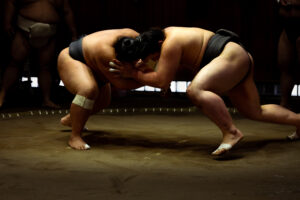In the heart of Japan, a unique sporting event captures the imagination of millions, creating an unparalleled fervor that sweeps the nation annually. This is the world of Ekiden, a marathon relay that embodies not just physical endurance but a deep cultural significance that resonates throughout Japanese society. From the bustling streets of Tokyo to the scenic byways of rural Japan, Ekiden fever grips participants and spectators alike, offering a blend of tradition, competition, and community spirit that is unmatched anywhere else in the world. Join us as we unravel the mysteries of Ekiden, exploring its origins, rules, and the powerful symbolism it carries, all while witnessing its growing appeal beyond Japan’s shores.
Ekiden Fever: The Heartbeat of Japan’s Streets
Ekiden season in Japan is a spectacle to behold, transforming the country’s streets into stages of intense competition and camaraderie. With thousands lining the roads to cheer on runners, the atmosphere is electric, charged with enthusiasm and national pride. The fervor for Ekiden is not just about the race itself but also the communal experience it fosters, drawing people from all walks of life together. Television broadcasts turn these local events into national spectacles, with live coverage ensuring that the entire nation is caught up in Ekiden fever. Every pass of the tasuki, the race’s symbolic sash, is a moment of high drama, eagerly anticipated and celebrated. Ekiden has indeed become the heartbeat of Japan’s streets, a reflection of the country’s love for athletics and its deep-rooted community values.
The Origins of Ekiden: A Journey Back in Time
The story of Ekiden begins over a century ago, tracing back to the early 20th century when the sport was conceived as a way to connect the old Japanese capitals by foot. Its name, combining the characters for "station" and "transmit," hints at its origins as a courier system, delivering messages across vast distances. The first official Ekiden race was held in 1917, covering a staggering distance between Kyoto and Tokyo, to celebrate the anniversary of the capital’s relocation. This historic event laid the foundation for Ekiden as a symbol of endurance, teamwork, and the transmission of tradition from one generation to the next, embodying the spirit of Japan’s rich history and its embrace of modernity.
The Rules of the Road: Understanding Ekiden
Ekiden’s unique format distinguishes it from other relay races, with teams made up of six to twelve runners, depending on the race’s length. Each participant runs a leg of the race, varying in distance from 3km to 22km, before passing the tasuki to their teammate. This sash is not merely a baton but a symbol of the team’s collective spirit and effort, making its transfer a critical and highly strategic moment of the race. Time penalties for dropped tasuki and strict exchange zones add layers of tactical depth to Ekiden, making it as much a mental challenge as a physical one. The race’s rules and structure demand not only speed but coordination, planning, and a deep bond among teammates, making each Ekiden race a testament to teamwork and perseverance.
Teams on the Run: The Spirit of Ekiden
At the heart of Ekiden lies the spirit of the teams themselves, diverse groups that range from university squads and high-school clubs to professional corporate teams. These teams embody the essence of Ekiden, with each member carrying the hopes and dreams of their companions. Training together year-round, the bonds formed among teammates are profound, forged through shared struggles and triumphs. The spirit of Ekiden is about more than just competition; it’s about belonging, improvement, and pushing each other to achieve a common goal. It’s this spirit that captivates the nation, making heroes out of ordinary athletes and inspiring countless others to take up the challenge.
The Baton Pass: Symbolism in Motion
The passing of the tasuki is a moment rich in symbolism and anticipation, representing the trust and unity of the team. Unlike a traditional baton, the tasuki is a fabric sash that runners wear diagonally across their bodies, making its exchange a unique and poignant element of the race. This act of passing the tasuki is laden with meaning, symbolizing the transfer of energy, hope, and determination from one runner to the next. It embodies the collective effort of the team, each member’s contribution crucial to the race’s outcome. In Ekiden, the tasuki is more than equipment; it’s a sacred token of the team’s shared journey, imbued with their aspirations and spirit.
Training Regimens: Preparing for the Long Run
Ekiden athletes undergo rigorous training regimes, tailored to the demands of the relay marathon. Emphasizing endurance, speed, and strategic passing, these programs are designed to forge elite runners capable of withstanding the pressures of the race. Training is a year-long commitment, with teams often retreating to high-altitude camps or secluded locations to focus on their preparation. Coaches play a pivotal role, crafting training schedules that not only enhance physical capabilities but also foster team unity and mental resilience. For Ekiden runners, preparation is a holistic endeavor, encompassing nutrition, mental conditioning, and the honing of passing techniques, all aimed at achieving peak performance on race day.
High School Heroes: The Young Faces of Ekiden
High school Ekiden races are a breeding ground for the sport’s future stars, with young athletes showcasing their talent on a national stage. These events are highly competitive, attracting the best young runners from across Japan and serving as a stepping stone to higher levels of the sport. High school Ekiden is not just about individual prowess; it’s a team effort that teaches valuable lessons in cooperation, sacrifice, and leadership. For many young athletes, these races are the highlight of their running careers, offering a chance to gain recognition and the possibility of securing scholarships or spots on prestigious university teams. The passion and determination of these high school heroes add a vibrant chapter to the story of Ekiden, signaling a bright future for the sport.
Corporate Clashes: Ekiden in the Business World
In Japan, Ekiden also thrives in the corporate world, with companies forming their own teams to compete in highly anticipated races. These corporate teams are not mere recreational groups but well-funded, professionally coached squads that include top athletes. The corporate Ekiden circuit provides a career path for runners post-university, with companies investing in the sport as a means of team-building, publicity, and fostering corporate loyalty. Races like the New Year Ekiden are major events, drawing widespread attention and showcasing the speed and endurance of Japan’s workforce. Corporate Ekiden races are a testament to the sport’s deep integration into Japanese society, illustrating how competition and commerce can unite in the pursuit of excellence.
Ekiden’s Cultural Impact: More Than a Race
Ekiden goes beyond the physical confines of the race, weaving itself into the cultural fabric of Japan. It’s a celebration of perseverance, teamwork, and community, reflecting broader societal values. Ekiden races are communal events that bring together families, schools, and local businesses, fostering a sense of belonging and collective pride. The sport has also influenced popular culture, inspiring novels, movies, and manga, further embedding it in the national consciousness. Through Ekiden, themes of endurance, unity, and the passage of tradition are explored, resonating with the Japanese people and offering lessons of resilience and cooperation that extend far beyond the racecourse.
International Appeal: Ekiden Crosses Borders
While rooted in Japanese tradition, Ekiden is gaining international traction, captivating runners and spectators around the globe. Races based on the Ekiden format have popped up in numerous countries, introducing the sport’s unique team dynamics and strategy to a wider audience. International teams are increasingly participating in Japanese Ekiden events, adding a global dimension to the competition. This growing interest abroad is a testament to Ekiden’s universal appeal, transcending cultural and linguistic barriers to unite participants in a shared experience of endurance and teamwork. As Ekiden continues to spread, it carries with it the potential to become a global sporting phenomenon, drawing people from diverse backgrounds into its distinctive, communal fold.
Future Footsteps: The Evolution of Ekiden
As Ekiden continues to evolve, it faces challenges and opportunities in equal measure. Innovations in training, changes in race formats, and the integration of technology offer paths to growth and increased engagement. The sport must also navigate the balance between tradition and modernity, finding ways to attract younger participants while preserving the essence that makes Ekiden unique. With efforts to include more women’s events and increase accessibility for international runners, Ekiden is poised for a dynamic future. As it adapts, Ekiden remains a vibrant showcase of human endurance and communal spirit, promising to inspire future generations of runners and fans alike.
Celebrating Ekiden: Festivals, Fans, and Fervor
Ekiden season is a time of celebration, with races accompanied by festivals, fan events, and a carnival-like atmosphere. These festivities highlight the cultural significance of Ekiden, transforming each event into a local holiday, complete with traditional foods, music, and entertainment. Fans play a crucial role, offering unwavering support to runners, creating a sense of unity and shared purpose. The anticipation and excitement generated by Ekiden are palpable, with every race a story of individual effort and collective achievement. In celebrating Ekiden, Japan celebrates more than just a sport; it celebrates its heritage, its values, and the enduring power of community.
Ekiden, with its rich history and deep cultural roots, remains a testament to the enduring allure of long-distance running and the unique spirit of teamwork it fosters. From the historic streets of Kyoto to the bustling avenues of Tokyo, Ekiden fever captures the essence of competition, community, and celebration. As the sport continues to evolve and cross borders, it carries with it the timeless values of endurance, unity, and the relentless pursuit of excellence. Ekiden is more than just a race; it’s a reflection of the human spirit in motion, a captivating spectacle that continues to inspire and unite people across Japan and beyond.








